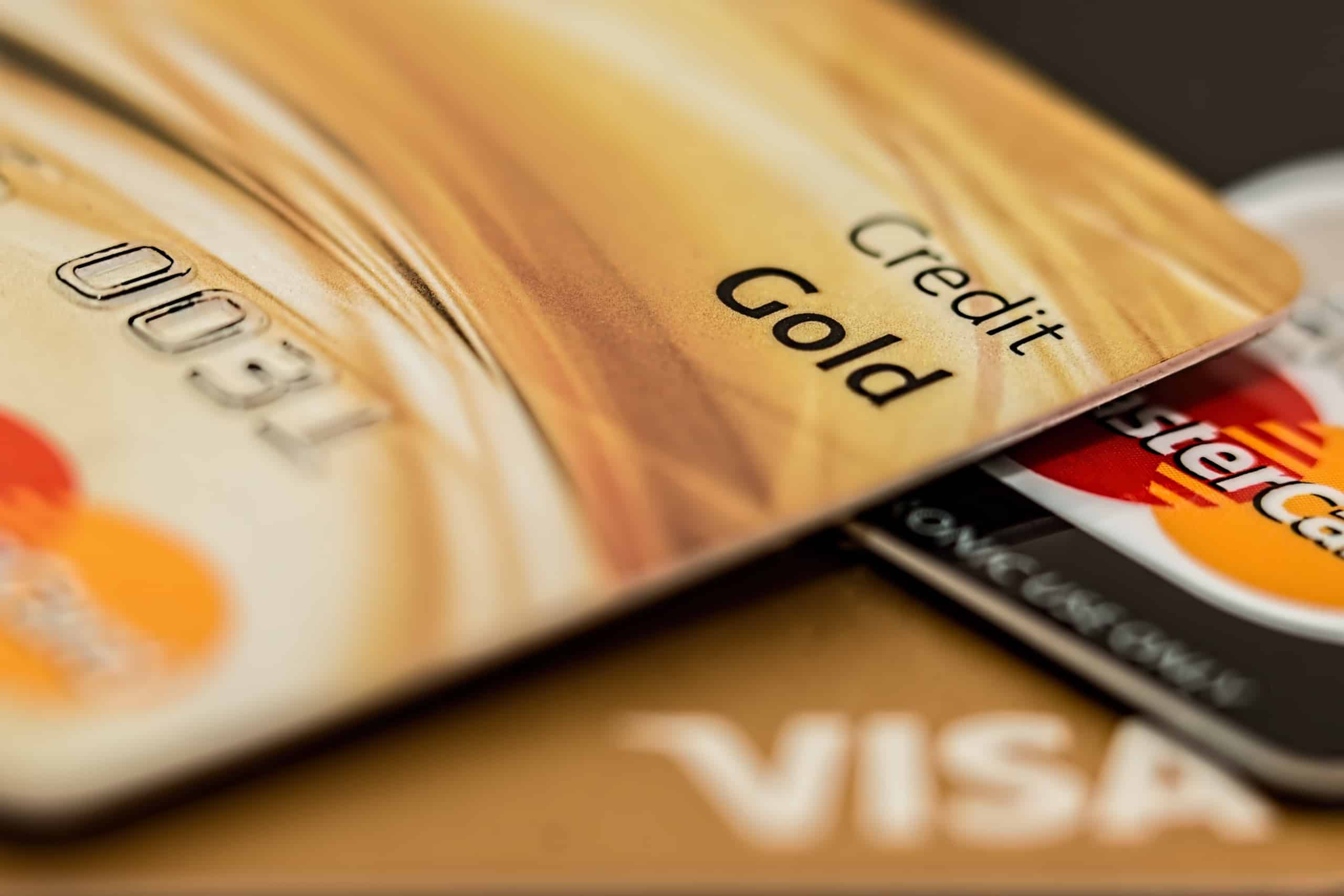Last Updated on July 2, 2024 by Archie Biggs
Key Highlights
- Credit cards allow you to borrow money from a financial institution
- They come with a credit limit, which is the amount you can owe at one time
- Understanding credit card terms like interest rate, annual percentage rate (APR), and grace period is essential
- Responsible credit card usage can help you build good credit and improve your credit score
- Different types of credit cards cater to various needs, such as rewards cards, secured cards, and business cards
- Using a credit card responsibly involves making timely payments and keeping credit utilization low
Introduction
Ooh, the world of credit cards! It’s buzzing with possibilities, kind of like the thought of that first date, right? Butterflies flutter, your head swims with options, and maybe a hint of “what ifs” flit around. But hold on, adventurer, before you dive headfirst into plastic paradise, let’s unpack this stuff first.
Imagine, for a moment, you’re about to embark on a financial first date. It’s exciting, sure, but just like choosing the right partner, navigating credit needs some understanding and, well, a sprinkle of responsibility.
Think of your first credit card as a gateway, not just to shiny purchases, but to financial independence. It’s like that first hello on a date, the start of a journey. But here’s the twist: credit cards, like good relationships, involve a bit of a give-and-take. They offer you money to borrow (kinda like trusting someone), but within limits based on your financial “rep,” similar to setting boundaries on a date. And remember that shady character who crashed your last outing? Credit card fraud is just as unwelcome, so keeping an eye on those statements is crucial!
Now, credit card terms might seem like a foreign language at first, but hey, even deciphering unspoken signals on a date takes practice. The interest rate, just like your interest in someone, can make or break the whole thing. And like timing matters on a date, the Annual Percentage Rate (APR) and grace period have their roles to play.
But here’s the exciting part: using your card responsibly is like building a rock-solid relationship with your credit score. Just like treating your date with respect strengthens your bond, responsible credit use opens doors to financial opportunities. So, choosing the right card is like choosing the right partner, someone who aligns with your goals and someone you can use wisely to grow together financially.
So, before you get swept away by the thrill of that first swipe, remember, knowledge is power! Learning about credit cards now is like prepping for that first date: you’ll be more confident, make informed choices, and avoid any awkward financial stumbles. And who knows, maybe you’ll even discover valuable lessons that apply beyond finance, like responsibility and foresight – qualities that make awesome partners in both love and life!
So, read on, learn, explore, and remember, a dash of smarts and a responsible mindset make great companions, no matter what kind of “date” you’re on.
Understanding the Basics of Credit Cards
Before diving into the mechanics of credit cards, it’s crucial to understand the basic terms associated with them. A credit card is a financial tool that is tied to a credit account with a bank or financial institution. This credit account allows you to make purchases or access a line of credit provided by the credit card issuer. When you open a credit card account, your credit card company gives you a set credit limit. This credit limit is the maximum amount of money that the credit card company allows you to use to make purchases or pay bills. Your available credit is reduced as you charge things to the card. You then pay back what you spent from your credit limit to the credit card company. Interest charges apply when you carry a balance on your credit card, and they are calculated based on the annual percentage rate (APR).
What is a credit card?
A credit card is a payment card issued to users as a system of payment. It allows the cardholder to pay for goods and services based on the holder’s promise to pay for them. Credit cards are a convenient way to borrow funds for short-term financing.
The mechanics of using a credit card
Using a credit card involves several key mechanics that cardholders must understand. Once approved, the credit card issuer assigns a credit limit based on the individual’s credit history, which represents the maximum amount that can be borrowed. When making a purchase, the cardholder effectively borrows funds from the card issuer, and this amount is added to their outstanding balance. Each month, the cardholder receives a statement reflecting their transactions and outstanding balance. It’s crucial to make at least the minimum payment by the due date to avoid late fees and potential negative impacts on credit score.
Credit Card Ratings
Credit card credit rating categories, including excellent, good, fair, poor, and bad credit statuses, have a direct impact on the credit limit assigned to a cardholder and the interest rates that they are charged. Credit cards offer a line of credit with a predetermined limit set by the issuer. As purchases are made using the credit card and payments are made towards bills, the available credit decreases. The amount spent must be repaid to the credit card company from the available credit limit. Interest charges apply when carrying a balance and are calculated based on the annual percentage rate (APR).
While credit cards offer a convenient way to borrow funds for short-term financing needs, responsible usage is critical to avoid accumulating high-interest debt. Consumers should aim to pay off their balance in full each month or, if not possible, pay more than the minimum required payment to reduce interest charges. It is important to stay within one’s credit limit and avoid overspending as this can lead to late fees and damage one’s credit score. Maintaining a good credit score is essential as it can help secure better interest rates for future loans or lines of credit.
Credit card fees
Credit card fees can be a significant expense in addition to interest charges. Some common fees include an annual fee, which is a charge for simply holding the card, and late payment fees if you do not make your minimum payment on time. Additionally, going over your credit limit or making certain transactions like balance transfers or cash advances may result in additional fees.
To avoid being caught off-guard by these fees, it is crucial to familiarize yourself with the terms and conditions of your credit card and understand any associated fees. Some credit cards may also have hidden costs, so it’s important to read the fine print carefully before signing up for a new card.
If you find that the fees associated with your current credit card are too high, consider shopping around for a new one that better suits your needs. Look for cards with low or no annual fees and favorable terms and conditions. By doing so, you can save money and make the most out of your credit card usage.
Credit cards work by allowing you to borrow money up to a certain limit and then pay it back with interest. One of the fees that are associated with credit cards is foreign transaction fees, which are charged when you use your card to make purchases in a foreign country. These fees typically range from 1% to 3% of the transaction amount. If you are a frequent traveler, it is important to choose a credit card that does not charge foreign transaction fees in order to avoid these fees and save money on your purchases abroad.

Types of Credit Cards
When it comes to credit cards, there are various types designed to suit different financial needs. These include rewards cards, which offer perks like cash back, travel rewards, or points for purchases. Secured cards require a security deposit and are ideal for building or rebuilding credit. Business cards cater to the specific needs of businesses, offering benefits tailored to their expenses and cash flow. Understanding these types is crucial for selecting the right card to match individual requirements. Types of credit cards, such as rewards cards that offer store credit, provide diverse benefits and cater to varied financial situations.
Airline – Travel Cards
Airline-Travel Cards are credit cards that cater to the needs of frequent travelers. They provide rewards and benefits that are specifically designed for airline-related expenses and travel requirements. Airline miles are a common feature of these cards, allowing cardholders to accumulate miles for every eligible purchase made. These miles can be redeemed for discounted or free flights, upgrades, and other travel-related perks.
Another notable benefit of Airline-Travel Cards is the travel insurance coverage they offer. This includes trip cancellation/interruption insurance, baggage loss/delay insurance, and rental car insurance, among others. Such coverage offers financial protection and peace of mind during travels.
Complimentary airport lounge access is another perk that comes with Airline-Travel Cards. This allows cardholders to relax in a comfortable and exclusive environment before their flight, making their travel experience more enjoyable and luxurious.
Some Airline-Travel Cards are affiliated with specific airlines, providing additional benefits such as priority boarding, free checked bags, or discounts on in-flight purchases. If you frequently fly with a particular airline, having a credit card associated with that airline can enhance your overall travel experience.
In conclusion, if you’re a frequent traveler who prioritizes airline-related expenses and travel needs, an Airline-Travel Card may be an excellent addition to your wallet. These cards offer an array of rewards and benefits tailored to meet your needs and preferences while providing security during your travels.
Rewards cards
Rewards credit cards are an excellent way to earn incentives for your spending habits. These incentives usually come in the form of cashback, travel rewards, or points that can be redeemed for various benefits, such as airline miles. It is important to comprehend the specific rewards structure of each card as they may vary significantly. Certain cards offer higher rewards for particular categories like dining or groceries while others provide a flat rate on all purchases.
To acquire the most out of your rewards card, it is crucial to understand your spending patterns and choose a card that aligns with them. For instance, if you frequently dine out or purchase groceries, you might want to opt for a card that provides higher rewards for these categories. If you travel frequently, then a card offering travel rewards would be a better option. Keep in mind that many cards also feature sign-up bonuses and other perks that can add value to your overall experience. So, make sure to read the fine print when choosing a rewards card and select one that will benefit you the most based on your spending habits and lifestyle.
Secured cards
Secured credit cards function as a viable option for individuals aiming to build or rebuild their credit. These cards necessitate a cash deposit that establishes the card’s credit limit, making them less risky for lenders. The deposit amount also serves as collateral, offering reassurance to the card issuer in case of non-payment. As users demonstrate responsible credit behavior, they may eventually qualify for unsecured credit cards, and in turn, receive a refund of their initial deposit. This approach is particularly beneficial for those with limited credit history or previous financial challenges.
Secured credit cards are a great option for those who have bad credit or are new to credit. These cards require a security deposit, which is refundable after closing the account or upgrading to an unsecured card. In comparison to unsecured credit cards for bad credit, secured cards are less expensive and tend to be more flexible in terms of approval. By making a deposit upfront, card issuers can offer a line of credit and help cardholders build their credit score over time. The Capital One Platinum Secured Credit Card is an example of a card that allows cardholders to open an account with a low deposit amount of $49 or $99.
0% APR Cards
0% APR cards, or 0% introductory APR cards, provide a promotional period where no interest is charged on purchases or balance transfers. The duration of this period varies from card to card and typically lasts for 6 to 18 months. It can be an excellent choice for individuals who want to save money on interest charges when making substantial purchases or consolidating their debt. However, it’s crucial to remember that once the promotional period ends, the regular APR applies, which may result in high-interest charges. Therefore, it is advisable to pay off your balance before the promotional period ends to avoid accruing significant interest charges. Before applying for a 0% APR card, it’s essential to read the fine print and understand any fees associated with the card, such as annual fees or balance transfer fees. Additionally, it’s important to have a plan in place for paying off your balance within the promotional period to take full advantage of this offer.
Business cards
Business credit cards are specifically designed to cater to the needs of businesses. They offer features like higher credit limits, rewards tailored to business expenses, and tools for tracking and managing expenses. Business credit cards may also provide detailed expense reports to streamline accounting processes. Additionally, they can help establish a credit history separate from personal finances, which is crucial for building a strong business credit profile. These cards are typically issued based on the business’s creditworthiness and may require a personal guarantee from the business owner.
Balance Transfer Cards
Credit cards provide a way to borrow money from a lender and repay it with interest. Balance transfer is one of the features of credit cards that allows you to move your outstanding balance from one card to another with a lower interest rate. This can help you save on interest payments and pay off your debt sooner. However, balance transfer cards usually require good or excellent credit, and there may be costs associated with the transfer, such as an introductory balance transfer fee or a fee for future transfers.
It’s important to assess these fees and make sure they don’t outweigh the savings made on interest payments before initiating any transfers. Additionally, it’s crucial to understand the terms and conditions of the new card thoroughly before making any decisions. Carefully analyze factors such as the new card’s APR (Annual Percentage Rate), credit limit, repayment period, and any penalties for late payments or exceeding credit limits.
Moreover, if you’re transferring balances from multiple credit cards onto one balance transfer card, make sure to close those accounts afterward. Keeping them open can lead to more debt accumulation and negatively affect your credit score. In summary, while balance transfer cards can offer significant savings on interest payments, it’s essential to evaluate all associated costs and read the fine print before making any decisions.
Student Cards
Student cards are a type of credit card that is specifically designed for college students. These cards offer an excellent opportunity for students to start building their credit history and understand how credit cards work. In comparison to regular credit cards, student cards have lower credit limits and more lenient qualification requirements. Additionally, they come with features such as rewards or cashback programs that are tailored to meet the spending habits of students.
However, it is vital for students to use these cards responsibly. It is recommended that they only charge what they can comfortably afford to pay off and make payments on time to avoid late fees and negative marks on their credit reports. Using a student card sensibly can help students establish a positive credit history, which will be beneficial in the long run when applying for loans or future credit opportunities.
It’s important to note that some student cards may also offer additional benefits like discounts on textbooks or other school-related expenses. However, before applying for any student card, it’s crucial to research and compare different options thoroughly. Some student cards may come with higher interest rates and fees than others, so it’s essential to read the fine print carefully before signing up.
Ultimately, using a student card responsibly can be an excellent way for college students to start building their financial foundation and pave the way towards a secure financial future.
Cash-Back Credit Cards
Cash-back credit cards are an excellent way to earn money while you spend. These cards offer a percentage of your purchases back to you as cash or statement credits, making shopping feel like a rewarding experience. To maximize the benefits of a cash-back card, it is essential to understand how the rewards structure works. Different cards have varying rates and categories for earning cash back based on the spending habits of their users.
Some cards offer high percentages on specific categories like groceries or gas, while others provide a flat rate on all purchases. Understanding which categories will earn you the most rewards can help you tailor your spending habits accordingly. For instance, if your card offers higher percentages on grocery purchases, you may want to consider buying groceries from retailers that accept credit cards.
Another way to make the most of your cash-back card is to pay off the balance in full each month. This helps avoid interest charges and ensures that any rewards earned go directly towards savings or reducing debt. Additionally, keep an eye out for limited-time promotions and sign-up bonuses offered by credit card companies as they can provide additional opportunities to earn cash back.Types of credit cards
In conclusion, using a cash-back credit card can be a lucrative way to earn money while shopping. However, it’s important to understand how different cards work so that you can choose one that best suits your lifestyle and needs. By maximizing rewards and paying off balances in full each month, you can make the most of your cash-back card and enjoy the benefits it has to offer.

Introducing the ‘How to’ Section
Understanding the ‘How to’ Section
Now that we’ve grasped the basics of credit cards, it’s time to delve into the practical aspect of using them effectively. The ‘How to’ section will provide a step-by-step guide, outlining everything from applying for a credit card to making your first purchase, understanding credit card terms, and managing your credit card bill. This section will equip you with the knowledge and confidence to navigate the world of credit cards seamlessly and responsibly.
What you will need to get started
To get started with using a credit card, you will need to have a good understanding of your credit score and credit history. Additionally, you must have a bank account from which you can make payments towards your credit card balance. When applying for a credit card, you will need to provide information about your income and employment. It’s important to compare different credit card offers, such as the best credit cards for balance transfers, no annual fee, travel, and college students, to find the one that suits your financial needs and spending habits. Finally, ensure you are aware of the credit limit, annual fee, and interest charges associated with the credit card.
Step-by-step Guide to Using a Credit Card
Step 1: Applying for a credit card involves filling out an application with personal information, including your income and employment details, to help the card issuer assess your creditworthiness. Once approved, you will receive your credit card in the mail. Step 2: Understanding credit card terms is crucial to manage your card effectively. Each card comes with specific terms and conditions, including the annual percentage rate, credit limit, and fees. Understanding these terms, including the fine print, will help you make informed financial decisions.
Step 1: Applying for a credit card
When considering applying for a credit card, it’s essential to understand your credit score and history. Check your credit report for accuracy and ensure that your score is in good standing. Research various credit card options, considering factors like interest rates, fees, and rewards. Choose a card that aligns with your financial goals and credit profile. Next, gather necessary documents such as proof of income and identification. Lastly, submit your application either online or in-person through the card issuer’s website or branch.
Step 2: Understanding credit card terms
Understanding credit card terms is crucial for responsible usage. When you receive your credit card, it comes with a terms and conditions document outlining the rules and fees. Key terms include “credit limit,” the maximum amount you can borrow, “interest rate,” the cost of borrowing if you carry a balance, and “minimum monthly payment,” the least amount you must repay each month. Other terms cover annual fees, grace periods, and more. Familiarizing yourself with these terms ensures informed and responsible credit card usage.
Step 3: Making your first purchase
Making your first purchase with a credit card marks the beginning of utilizing your line of credit. Select a purchase within your means and ensure you understand the terms associated with your card, including the interest charges and due date. After making the purchase, keep track of your expenses to ensure you stay within your credit limit. It’s crucial to start establishing good credit habits from the outset by making timely payments and monitoring your credit card statement regularly during the introductory period.
Step 4: Paying your credit card bill
Paying your credit card bill is crucial for maintaining a good credit score and history. When your bill arrives, ensure you review it thoroughly, understanding the payment due date, minimum amount due, and full balance. Setting up automatic payments or reminders can be a good way to ensure you never miss a payment and maintain a good credit score. By paying the full balance, you can avoid interest charges, demonstrating responsible credit card usage. Understanding your billing cycle and grace period is essential for managing your payments effectively.
Tips for Responsible Credit Card Usage
When using credit cards, responsible usage is essential for maintaining good credit standing. Timely payments are crucial to avoid late fees and negative impacts on your credit score. Keeping credit utilization low by not maxing out your credit limit also demonstrates responsible usage. Furthermore, understanding your credit card’s terms and conditions, including interest rates and due dates, is important for managing your finances effectively. By following these tips, you can make the most of your credit card while maintaining good financial health.
Pay attention to your Watch your FICO® Score
In the United States, numerous credit card companies offer free access to your FICO® Score, which is the most commonly used credit score. Additionally, you can request a free copy of your credit report once a year from each of the major credit bureaus (Equifax, Experian, and TransUnion) by visiting AnnualCreditReport.com. It’s essential to monitor your score and report regularly as it enables you to track your progress and spot any potential errors or issues. By doing so, you can take proactive steps to address these concerns and improve your credit health. Monitoring your credit also helps you detect signs of identity theft or fraud early on so that you can take action quickly.
Importance of timely payments
Making timely credit card payments is crucial. It directly impacts your credit score and overall credit health. Timely payments show responsible credit behavior, positively affecting your credit history. Additionally, late payments can result in hefty late fees and increased interest charges, ultimately costing you more. Consistently paying on time also helps you build a good relationship with the card issuer, potentially leading to increased credit limits and better terms. Ultimately, timely payments are vital for maintaining financial stability and a positive credit standing.
Keeping credit utilization low
Keeping credit utilization low is essential for maintaining a healthy credit score. This term refers to the ratio of your credit card balances to your credit limits. To keep this ratio low, try to pay off your balances in full and on time every month. Ideally, aim to use no more than 30% of your available credit. High credit utilization can negatively impact your credit score, so keeping it low demonstrates responsible credit management and financial stability. This is a key factor in establishing and maintaining good credit standing.

Credit Cards Vs. Debit Cards
Similar in appearance but fundamentally different, credit and debit cards serve separate financial functions. Debit cards deduct payments directly from the holder’s bank account, limiting spending to available funds. Credit cards, on the other hand, extend a line of credit with a predetermined limit, allowing users to borrow funds and repay later. Understanding the disparities in how they influence credit score, interest charges, and financial security is crucial for informed financial decision-making.
Similarities and differences
When comparing credit cards and debit cards, it’s essential to understand their similarities and differences. Both can be used for making purchases and offer a level of security against fraud. However, a credit card allows you to borrow money up to a certain credit limit, while a debit card is directly linked to your bank account, using your own funds for transactions. Additionally, credit card usage can impact your credit score, whereas debit card usage does not. Understanding these distinctions is crucial for responsible financial management.
Impact on credit score
Using a credit card can have a significant impact on your credit score. When you use your credit card responsibly by making timely payments and keeping your credit utilization low, it can have a positive effect on your credit score. On the other hand, carrying high balances, missing payments, or maxing out your credit card can lower your credit score. Your credit score is a crucial factor in determining your creditworthiness for future financial endeavors, so it’s essential to manage your credit card usage wisely and monitor your credit score through the three major credit bureaus: Equifax®, Experian™, and TransUnion® to maintain a good standing.

Our Two Cents
Hey there, fellow financial explorer! I’m right alongside you, peering into the vast, sometimes overwhelming world of credit cards. Remember that new phone I almost bought on impulse last month? Yeah, let’s just say my “research” wasn’t exactly thorough. I learned the hard way that picking the right credit card is kinda like choosing a travel buddy for a wild adventure. You need someone who complements your style, shares your goals, and won’t leave you stranded with a hefty bill!
Here’s the thing: the sheer number of options can feel paralyzing. Travel rewards? Cash back? Zero interest periods? My head was spinning! But then, I remembered my epic college road trip. We had a blast, but my friend who insisted on the “luxury” option ended up drowning in debt while my “budget-conscious” pick saved the day (and the trip!). It taught me that the perfect card isn’t about bells and whistles; it’s about aligning with your needs.
So, here are my two cents: take a deep breath, adventurer! Before you swipe, ask yourself the tough questions. What are your spending habits? Are you a jetsetter or a homebody? Do you crave rewards or just want a simple, reliable companion? Once you know your “financial travel style,” research cards that match. Think of it like finding your credit card soulmate!
Remember, there’s no one-size-fits-all solution. But by understanding your financial goals and exploring your options with a clear head, you’ll find the perfect card to empower your journey, not weigh it down. And hey, if you ever get lost in the credit card maze, don’t hesitate to ask! We’re all in this together, learning and growing on this wild financial ride. Now, go forth and choose wisely, my friend!
Frequently Asked Questions
What happens if I miss a payment?
Missing a credit card payment can lead to late fees, increased interest rates, and a negative impact on your credit score. It’s important to make at least the minimum payment on time to avoid these consequences and maintain good financial standing.
How does my credit card usage impact my credit score?
Your credit card usage impacts your credit score through factors like payment history and credit utilization. Timely payments and keeping credit utilization low can positively impact your score, while missed payments and high credit utilization can have a negative effect.
How Do Credit Card Rewards Work?
Your credit card usage impacts your credit score through factors like payment history and credit utilization. Timely payments and keeping credit utilization low can positively impact your score, while missed payments and high credit utilization can have a negative effect.
How do credit cards work?
Credit cards work by allowing you to borrow money from a financial institution, typically a bank, up to a certain credit limit. When you make a purchase using a credit card, the bank pays the merchant on your behalf, and you are essentially borrowing that money from the bank. You then have a certain period of time, known as the grace period, to repay the borrowed amount without incurring any interest charges.
If you choose to carry a balance beyond the grace period, interest will be charged on the remaining balance. The interest rate is typically expressed as an annual percentage rate (APR) and can vary depending on factors such as your credit history and the type of credit card.
In addition to borrowing money, credit cards often come with other features and benefits. For example, many credit cards offer rewards programs where you can earn points or cash back for every dollar spent. Some credit cards also provide additional perks such as travel insurance, extended warranties on purchases, and access to airport lounges.
It’s important to use credit cards responsibly by making payments on time and keeping your balances low. This can help you build a positive credit history and avoid excessive interest charges or debt.
How do secured credit cards work?
Secured credit cards are a type of credit card that requires a security deposit to be made before using the card. This deposit serves as a security measure for the card company in case of non-payment. The deposited funds are not used for making purchases, but rather as a guarantee for the company. For example, if you deposit $200 and make a $50 purchase on February 1, 2024, you will only owe $50 on your bill. This type of credit card is often used to build credit or for those with a limited credit history. It is important to note that the deposit may be returned if the cardholder consistently makes on-time payments and maintains a good credit score.




